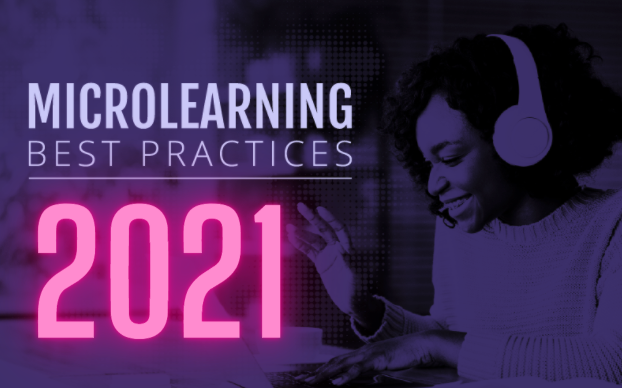Workers are busier than ever, and according to a new study, even in the early days of the pandemic, 73% reported feeling exhausted citing no separation between work and life (27%) and unmanageable workloads (21%) as top reasons.
With many companies going remote for the foreseeable future, it’s difficult to get your team to sit down and take, much less engage with, a formal eLearning course.
Enter microlearning
Microlearning has been around for a while, but this may be the first time you’ve been asked to create microlearning and you’re probably wondering what’s the best way to create an engaging micro-course.
Start with these 3 best practices and you’ll be well on your way to creating awesome microlearning
1. Make it mobile friendly
One of the great things about microlearning is that it can be consumed in short bursts on the go, or during breaks in between longer tasks.
This means learners are often looking at your content on their phones or tablets when they’re away from their desks.
Use an authoring tool like Lectora that makes it easy to develop responsive learning content.
You’ll want to employ techniques like content chunking and vertical scrolling to make your course look and function better on a small device screen.
2. Narrow your content down to one key idea per microlearning module
You have a pretty short amount of time to make an impact on your learner. Don’t try to cram an entire eLearning course worth of information onto one slide and call it microlearning. Each module should focus on 1 main idea. This makes it easier for the learner to retain that information.
In order to pick your one big idea, you need to carefully evaluate your learner objectives.
Microlearning requires you to be much more granular and exact. You can’t just say “This course will teach workers how to be more productive while working remotely.” That’s too broad a statement.
You could, however, say “This module will cover time management skills like calendar blocking and task tracking.” And then the next microlearning module could cover actionable tips to minimise distractions at home.
3. Don’t limit yourself to one format
It’s dangerous to set hard and fast rules, like “Microlearning must be a 3-5 minute long mini course.” Microlearning can be presented in any digital medium—text, infographic, mini eLearning, video, etc. Experiment with what works best for your content and your learners.
Ask yourself, “would I give up 5 minutes of a busy for this piece of learning? If the answer is no, you need to try something else.
Learn more about how we use microlearning in our Rockstar Learning Platform and a guided walk-through.
You can also sign up for free 30-day trial of our Authoring Suites to build your own microlearning with Lectora and all the templates and assets in the AssetLibrary.
Contact us to discuss your needs further.
